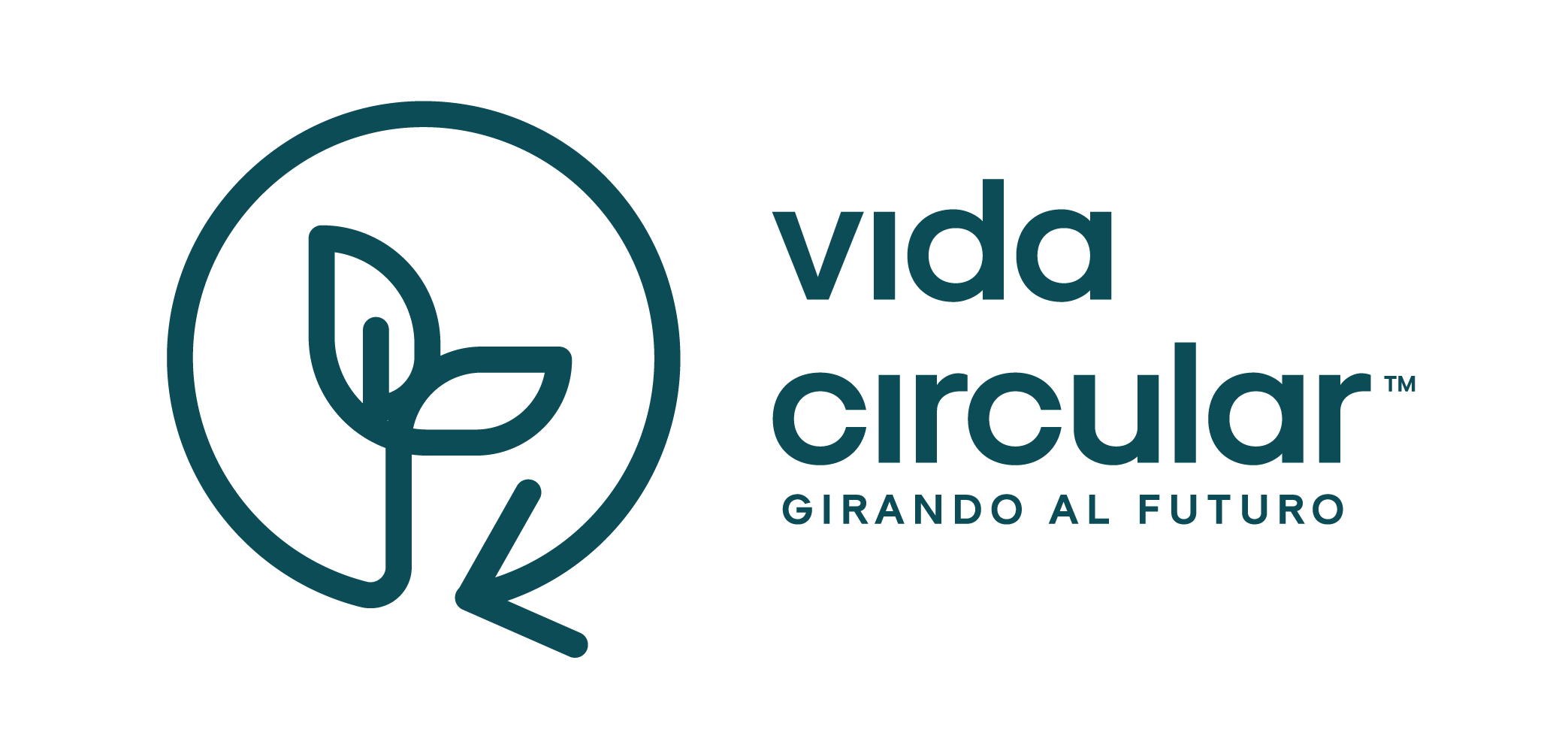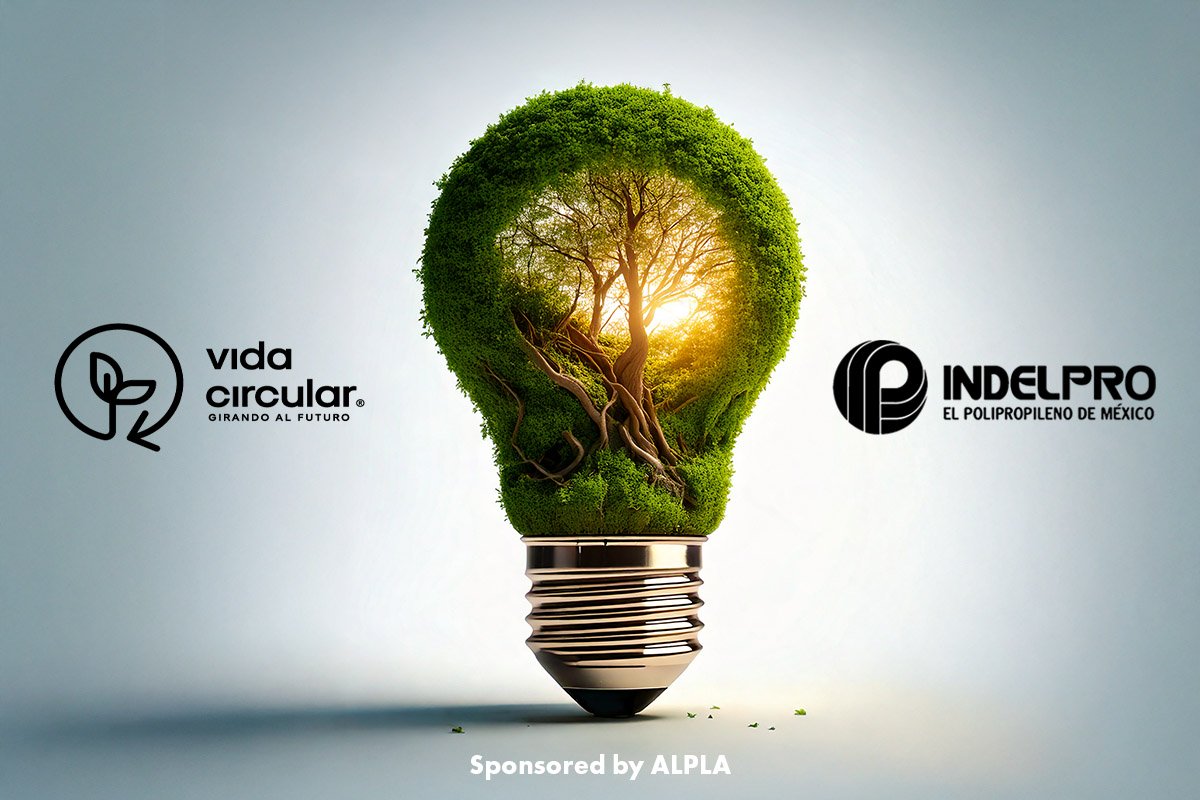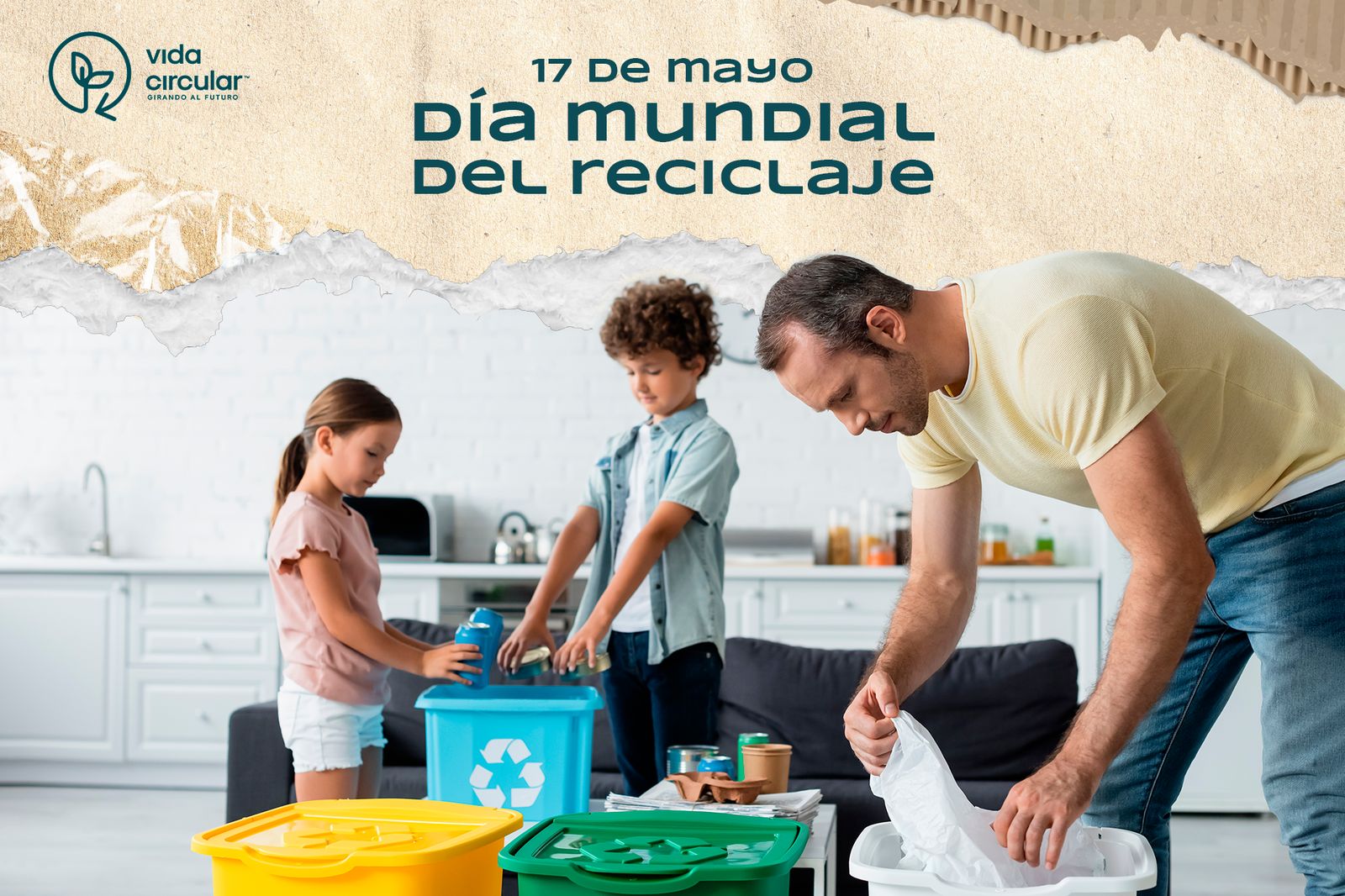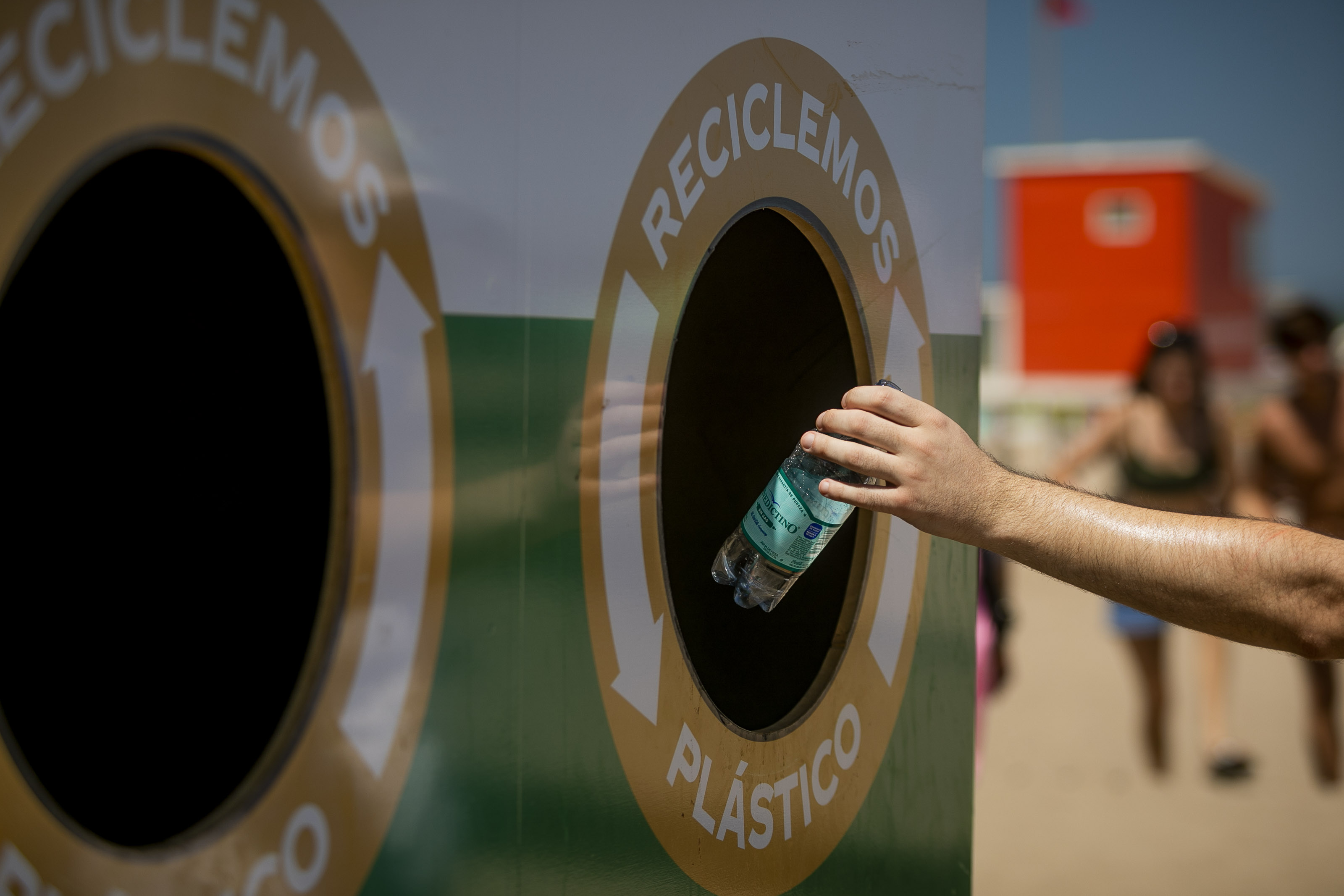
Learn more about the circular economy, the path to a sustainable future
Circular economy: Transforming production and consumption
The transformation towards a more sustainable economy is an urgency that we cannot ignore. In this context, the circular economy emerges as an innovative solution to the traditional linear model of extract, produce, consume and dispose. But what exactly is the circular economy and how can it make a difference to our planet?
What is the circular economy?
The circular economy emerges as a new system of production and consumption where waste is not generated, everything is transformed, everything is used, everything is reused.
This is when all waste becomes resources in an economy that ceases to be linear to become circular, this model brings a challenge of change, since we live in an economic system based on a linear model that consists of intensively extracting resources and raw materials, manufacturing in an exaggerated way things that are distributed over long distances, processes disintegrated from each other, things that are purchased, then discarded by expiration date or obsolescence, this type of economic model is unsustainable.
In other words, the circular economy is a system of production and consumption that focuses on the reuse, repair, renewal and recycling of existing materials and products. Instead of generating waste, everything is transformed and reused. This model seeks not only to reduce waste and pollution by design, but also to keep products and materials in use for as long as possible and to regenerate natural systems.
So is it time to learn another way of producing and consuming what we need? From consuming and producing a lot to producing and consuming better. The Circular Economy then constitutes a profound change in the way of production and consumption, it raises the need to leave behind this linear logic of extract, produce, consume and discard to move towards a model in which waste and pollution are eliminated from the design stage, products and materials that enter the economic cycle are used for as long as possible and economic processes regenerate natural systems instead of degrading them.

Fundamental principles of the circular economy
The Ellen McArthur Foundation, a world leader on the subject, identifies three fundamental pillars on which the circular economy is based, these are:
- Eliminate waste and contamination
The first step towards a circular economy is eco-design. This involves designing products in such a way as to minimize waste and pollution from the outset. The goal? To close the materials cycle, ensuring that products at the end of their useful life do not become waste but resources for new processes.
- Circulate products and materials
Maintain products and materials in use, either as a product or when they can no longer be used as components or raw materials. Once a resource has entered the economy, it must be prevented from losing its value and usefulness.
- Regenerating nature
By regenerating natural systems we can change our priorities, our focus should not simply be on doing less damage to the environment, but actively seeking to regenerate natural capital for the better.
Benefits of the circular economy
The path towards responsible consumption and production contributes to cultivate and develop learning skills in educational environments. The Circular Economy, among other benefits, promotes creativity, critical thinking, problem solving and social innovation, which are some of the skills of the 21st century, in addition to the valorization of waste, promoting sustainable cities, i.e. producing and consuming in a sustainable way is a change towards a better life.
Adopting a circular economic model has multiple advantages, both for the environment and for society:
- Waste and pollution reduction
The circular economy is synonymous with efficiency and responsibility. By maximizing the life cycle of products through reuse, repair, refurbishment and recycling, we drastically minimize the amount of waste that ends up in landfills and oceans. Not only does this reduce soil and water pollution, it also reduces the emission of greenhouse gases during the production and disposal of goods. An additional benefit is the reduction in air pollution, thanks to less dependence on fossil fuels.
- Resource conservation
The circular model is inherently designed to preserve natural resources. By focusing on efficient material utilization and innovative recycling and reuse processes, we decrease the extraction of finite resources, relieving pressure on vulnerable ecosystems. This not only ensures the availability of critical materials for future generations, but also maintains the balance of our ecosystems, which are fundamental to life on Earth.
- Innovation and economy
The circular economy drives innovation by requiring creative solutions for product design, business models and production processes. This approach opens up a new landscape of economic opportunities, from startups offering sharing economy services to large corporations redefining their supply chains towards more sustainable models. Not only can this shift generate a new economic sector focused on sustainability, but it also promotes the creation of green jobs, contributing to global economic development.
- Long-term sustainability
Adopting a circular model is essential to ensure the long-term sustainability of our planet. By regenerating natural systems and reducing resource exploitation, we are moving towards a future where economic growth does not translate into environmental damage. This vision of sustainability not only focuses on preserving the environment for future generations but also promotes a more equitable society, where resources are used efficiently and responsibly.

How to contribute to the circular economy
Each of us can play a crucial role in the transition to a circular economy. Here are some everyday actions:
Opt for products that are designed to last and can be easily repaired or recycled.
Reduce consumption of single-use products and choose reusable alternatives.
Support companies that follow circular economy practices.
Educate yourself and others about the importance of a sustainable economic model.
The circular economy is not just an alternative; it is a necessity to secure the future of our planet. By changing the way we produce, consume and think about resources, we can create a world where economic growth and sustainability go hand in hand.
How to contribute to the circular economy?
The transition to a circular economy is a shared responsibility that requires everyone's active participation. From personal decisions to collective actions, here's how you can contribute effectively:
Opting for durable and repairable products
- Prioritize quality over quantity: Choose products that are known for their durability, even if this means a higher initial investment. In the long run, this reduces the need for frequent replacements and, therefore, waste generation.
- Support repairability: Look for products that offer repair facilities, such as availability of spare parts and access to service manuals. This extends the useful life of products and encourages a culture of repair rather than replacement.
Reduce single-use consumption
- Adopt reusable alternatives: Replace single-use items with reusable options, such as water bottles, shopping bags, utensils and food containers. This simple but effective change can significantly reduce your waste footprint.
Supporting responsible companies
- Consume consciously: Before making a purchase, research companies' sustainability practices. Prefer those that demonstrate a genuine commitment to the circular economy, such as using recycled materials or implementing take-back programs. It is essential to support companies that seek to to reduce CO2 emissions emissions in the industry. Choosing companies that opt for sources such as solar or wind not only reduces carbon emissions, but also promotes a sustainable energy future.
- Promotes the local and circular economy: Supporting small businesses and local producers not only strengthens the local economy, it can also reduce the carbon footprint associated with long-distance transportation of products.
Education and awareness
- Be informed and share: Stay informed about sustainability and circular economy issues. Share this information with your family, friends and community to create a collective awareness of the importance of our consumption choices.
- Participate in community initiatives: Join or initiate circular economy projects in your community, such as composting programs, time banks, or product exchange and repair systems.
Being an agent of change
- Promotes sustainable policies: Supports and advocates for public policies that promote the circular economy, whether at the local, regional or national level.
- Innovation at work: Propose and implement circular economy practices in your workplace. This can include everything from recycling and waste reduction to fostering a culture of sustainability among your colleagues.
Concluding on the circular economy
In conclusion, the circular economy is not just an alternative economic model; it is a roadmap to a sustainable future. By embracing principles that promote waste reduction, resource conservation, innovation and long-term sustainability, we can collectively address some of the most pressing environmental challenges of our time. The transition to the circular economy offers an unprecedented opportunity to reimagine and transform our relationship with natural resources, fostering a continuous life cycle of products and materials that benefits both the planet and its inhabitants.
Every action counts, education and awareness are key to driving this transformation, as they enable each of us to understand the impact of our actions and how we can make a difference.
The circular economy is more than a necessity to secure the future of our planet; it is an invitation to be part of a collective solution. By changing the way we produce, consume and think about resources, we are not only contributing to a more sustainable world, but also opening the door to new economic opportunities, innovations and a better lifestyle for all. Let's make the circular economy not just a vision for the future, but a present reality in our lives. Together, we can create a legacy of sustainability for future generations, ensuring a healthy planet and shared prosperity.




